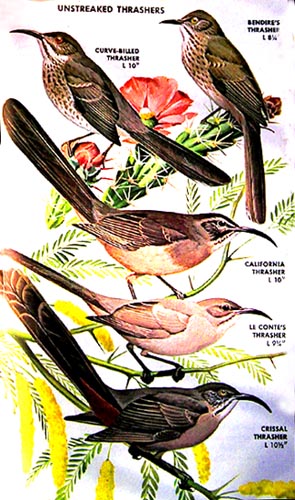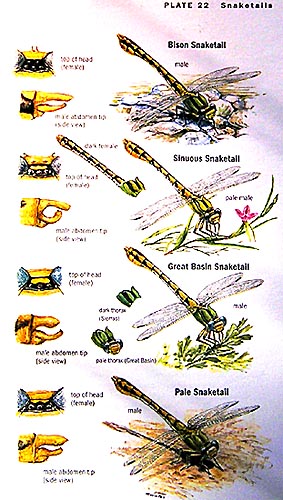|
page 11
CHANGES IN LATITUDE, CHANGES IN ATTITUDE
|
|

Oh, yesterday's over my shoulder
So I can't look back for too long
There's just too much to see, waiting in front of me
And I know that I just can't go wrong
Chorus:
With these changes in latitudes, changes in attitudes
Nothing remains quite the same
With all of my running and all of my cunning
If I couldn't laugh I just would go insane
Jimmy
Buffet
Sometimes I have a sound track running through my head. It is running
now as I consider my own changes in thinking about dragonflies. First,
I didn't think about them at all. Then an odd moment here, and a weird
coincidence there, and I was hooked, sort-of, but flopping and floundering
like all beginners, mistake after mistake. Those mistakes are fewer now,
and where the danger lies is now more apparent. It has since evolved from
an interest in knowing what odes were around where I live to thinking about
them in a broader perspective.
So when I had a family event in Las Vegas in September, Rita and I chose
to skip The Strip and instead rented a car and dashed back into California
for birds (a stake-out Wood Thrush) and for odes. We had just enough time
to try China Ranch (right), where colorfully bagged dates danced
in brisk winds, and then a stop at Tecopa, both in the southernmost reaches
of Inyo County.
|
Just outside of the tiny town of Tecopa, the Amargosa River winds through
the desert (below). It is not much of a stream but in this arid landscape,
all the odes are packed together here, even in September, which is getting
quite late in the season.

|
Our list for 16 Sep 2006:
California Dancer 9
Familiar Bluet 70
Desert Forktail 35
Common Green Darner 1
Blue-eyed Darner 4
White-belted Ringtail 1
Flame Skimmer 1
Variegated Meadowhawk 20
glider, sp 1
|
Two of these were lifers, so we concentrated on them:
|

Desert Forktail Ischnura barberi an exceptionally
lovely little damsel (above), and
White-belted Ringtail Erpetogomphus compositus
a much wanted gomphid (below)
|

|
 I
find my interests changing. From a 'geez-whiz' novice a more serious devotee
is emerging. This is both good and bad. I suppose it is a natural transition
and yet, boy was it fun when it was just all so new and there was so much
to learn! Of course, there is actually more to learn now the literature,
who's who in the dragonfly world, or odonata phylogeny but these are
familiar paths, similar to those in the birding world. I
find my interests changing. From a 'geez-whiz' novice a more serious devotee
is emerging. This is both good and bad. I suppose it is a natural transition
and yet, boy was it fun when it was just all so new and there was so much
to learn! Of course, there is actually more to learn now the literature,
who's who in the dragonfly world, or odonata phylogeny but these are
familiar paths, similar to those in the birding world.
I also find myself placing limits on what I want to know. When I was
a teenager in high school, and becoming very interested in birding, I used
to spend hours going through my Robbins' Field Guide of North American
Birds. This had come out in 1968 and was innovative in that the plates
were on one side of a double-page spread, with text and range maps on the
other page. At the time, the page that most intrigued me was the page on
"unstreaked thrashers," painted by Arthur Singer (right). At the time,
the pages of colorful eastern warblers did not make a dent I didn't have
the resources to go back East. But Arizona! I was going to drive there
on my own the minute I turned 18! I was fascinated by the thrashers because
they looked cool, and because they were similar (but identifiable) and
sorted themselves out by habitat. Wouldn't it be great, I recall thinking,
to see all these thrashers?
It didn't take me that long in the 1970s to see all the thrashers
indeed, by the end of that decade I'd seen all of them within California
[where Curve-billed is a vagrant, but all the others locally breed]. Thrashers
aren't special to me any more. They are still fine birds as are many
others but the mystery is gone. But I remember longing to see them way
back when . . |
 Now
I find myself repeating some of the same steps and emotions as in my youth.
I often flip through Manolis's (2003) Dragonflies and Damselflies of
California, studying what is where and when. I read the CalOdes' archives
with interest and now want to go to places like Pine Flat Road, Willow
Lake, Cooper Swamp, and West Pond. Ironically, I've been to West Pond many
times as a birder. Now I'll go back with new eyes. Now
I find myself repeating some of the same steps and emotions as in my youth.
I often flip through Manolis's (2003) Dragonflies and Damselflies of
California, studying what is where and when. I read the CalOdes' archives
with interest and now want to go to places like Pine Flat Road, Willow
Lake, Cooper Swamp, and West Pond. Ironically, I've been to West Pond many
times as a birder. Now I'll go back with new eyes.
Yet I am unconsciously placing limits. I currently desire to see only
the dragonflies and damselflies of California. I have a book on world odes
and know there are ~6000 species. I have no chance of seeing a great many
of them. I've spent almost all of my adult life traveling and finally reaching
my goal to see half the birds of the world (5000), and there are still
more birds to seek out. But the time and money is not there to repeat all
those trips with a focus on dragonflies. So, although it is nice knowing
about the diversity across the globe, it is just not important to me to
see them. I'm sure I'll notice odes on future travel, but I can't see them
becoming important in the way birds are.
California is another matter. There are only 110 species (with Striped
Saddlebags just added this month at West Pond), and a goal of seeing at
least 100 of them is quite reasonable. And, like in my younger days, I
find that I have a fascination with one particular page in Manolis (2003)
the 4 species of snaketail (left). All gomphids seem elusive here in
Monterey County, and there appears to be but a single record of Bison Snaketail
in the county. So the snaketails require travel and timing and the search
for them sounds like great fun. Like the thrashers, they are not as gaudy
as some other species, and the four of them are similar (but identifiable).
They (apparently) separate out by habitat up in the northeastern part of
this State. So it has become a goal to see and photograph the four snaketails.
. . . yesterday's over my shoulder
So I can't look back for too long
There's just too much to see, waiting in front of me
And I know that I just can't go wrong
With these changes in latitudes, changes in attitudes
Nothing remains quite the same
With all of my running and all of my cunning
If I couldn't laugh I just would go insane.
|
|
|
|
Literature cited:
Manolis, T. 2003. Dragonflies and Damselflies of California.
Calif. Natural Hist. Guide 72. Univ. of Calif., Berkeley, CA.
|
PHOTOS: All photos are © 2006 Don Roberson; all rights
reserved.
TOP
TO PORTAL
PAGE OF DON'S ODONates
TO BIRD FAMILIES
OF THE WORLD
TO MONTEREY COUNTY
PAGE
TO HOME PAGE
|
